Understanding alternative chord shapes and inversions can have massive benefits for your lead playing – take a break from scales and give your solos a boost by incorporating these shapes
Step away from your usual scales by peppering your leads with some smart new chord shapes

While scales are without doubt an essential part of understanding how music and melodies work, they can sometimes leave us with unanswered questions about harmony and melody.
For example, trying to come up with a mean and moody guitar solo using the major scale would be a challenge! Many of us search for new ideas while our fingers habitually reach for patterns that, while useful, don’t help us expand our boundaries.
Doing this in a methodical way can seem like a daunting task – but if it were that easy, everyone would be at it! There are tangible benefits to finding alternative chord shapes (commonly referred to as ‘inversions’) all over the fretboard and there are practical steps you can take that will guarantee progress if you go with the flow and keep an open mind.
If you’re playing rock/blues solos, an approach like this may seem counterintuitive. But while you could spend this time on your technique, this activity also offers more interesting lines to play.
Example 1
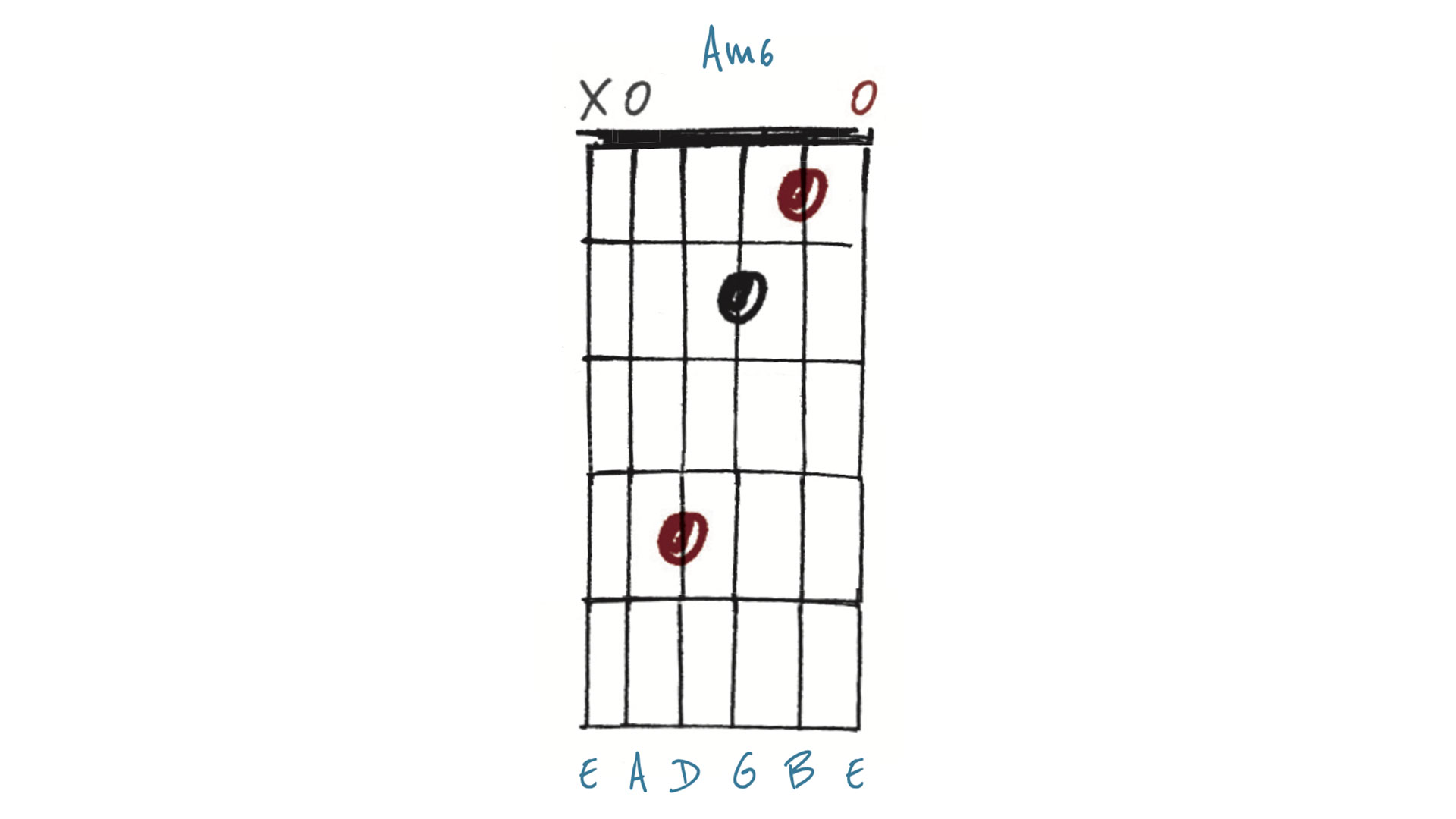
This is an open voicing of Am6. The 6 in question is an F# on the fourth string, which adds a bit of drama to an A minor chord and is great for adding interest to melodic lines.
Understanding the specific notes in a chord is hugely helpful, too – no need to be a theory genius, just look for the shapes!
Example 2
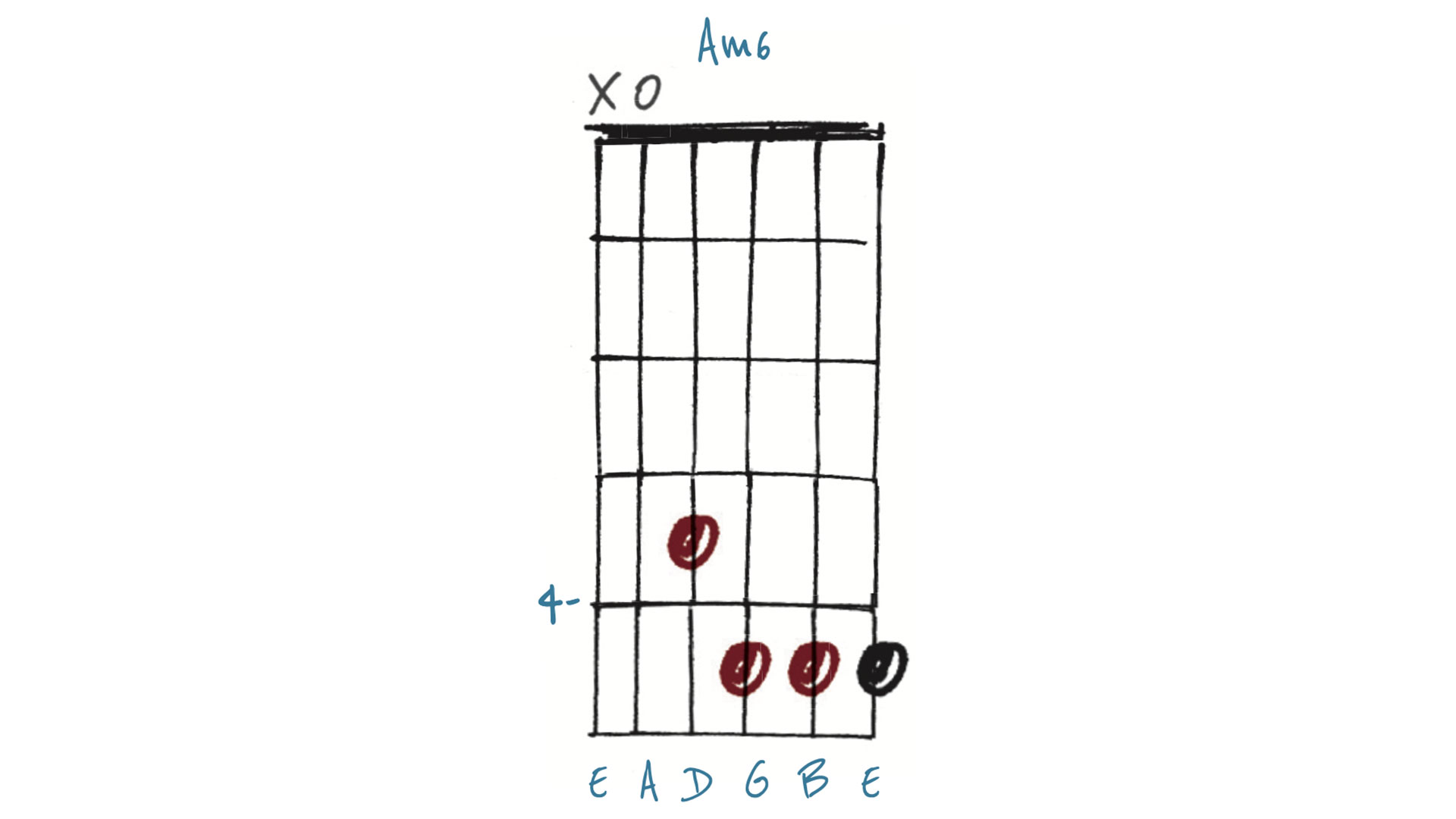
This Am6 is more of a ‘Django’ voicing, though you can also see how all these notes (apart from the F#, of course) fall within the A minor pentatonic. The F# is the same one as in Example 1 on the fourth string but with all the other notes arranged or ‘stacked’ on top.
Example 3
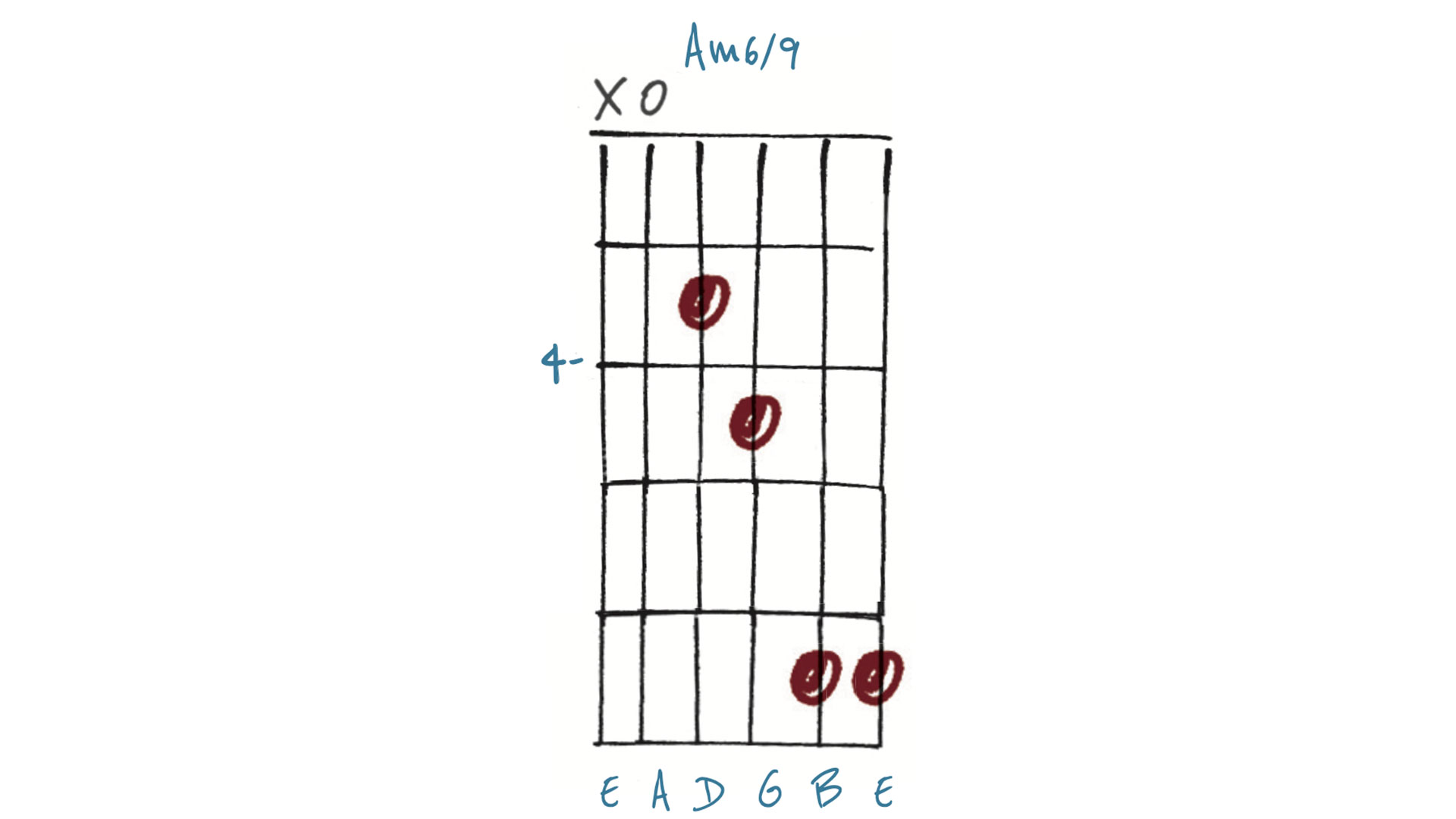
While we’re in that register, let’s check out a slightly more detailed Am6/9. The 9th comes courtesy of the B on the first string. Don’t feel you should have new ideas jumping forth from your fingers just yet, but putting your fingers in these perhaps unfamiliar places will have benefits.
Example 4
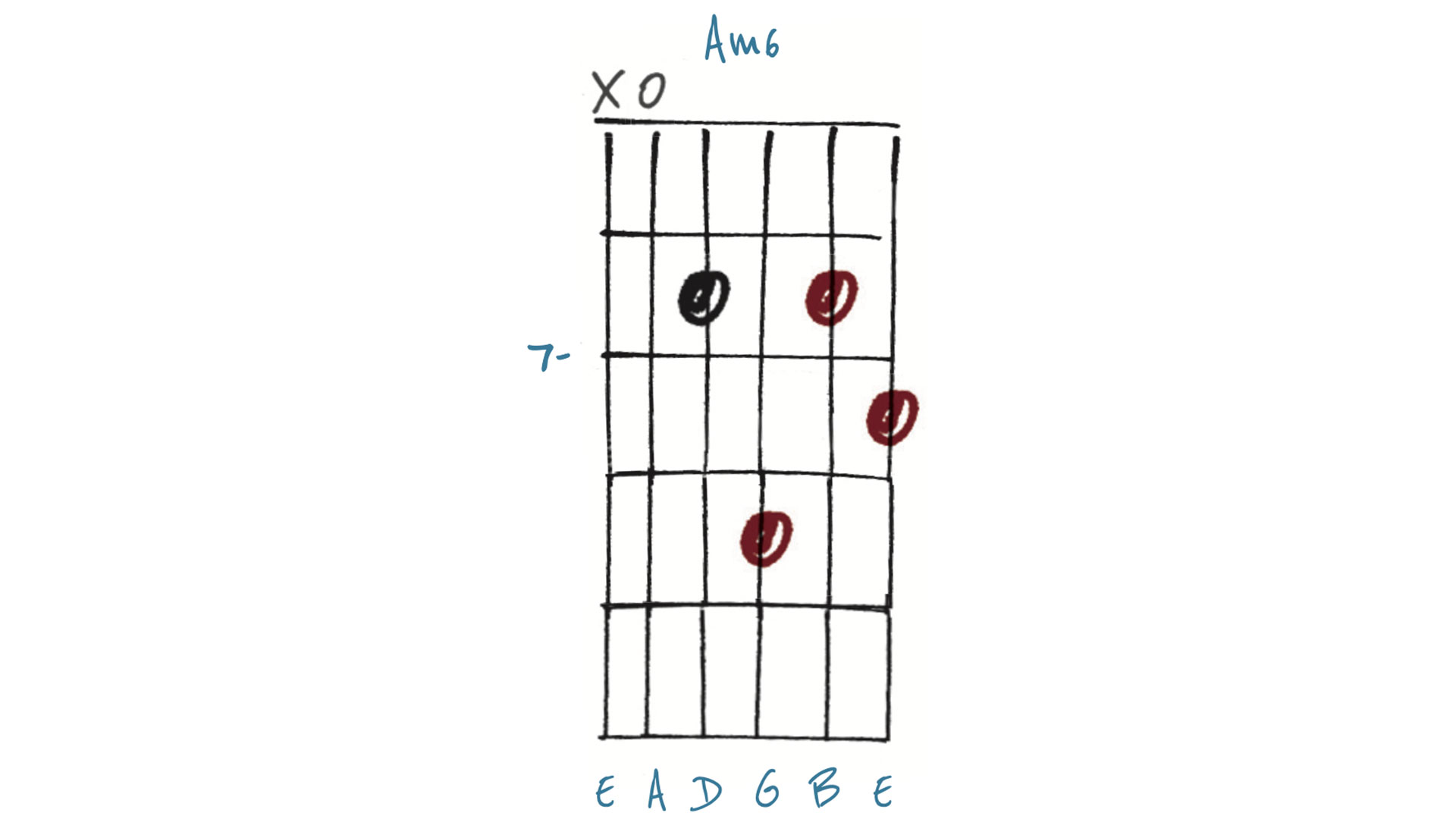
Moving upwards, this Am6 features notes from shape 4 of the A minor pentatonic, plus the F# at the 7th fret of the second string. It’s worth experimenting with some single-note lines incorporating this shape, perhaps raking across as part of a melodic line, Mark Knopfler-style.
Example 5
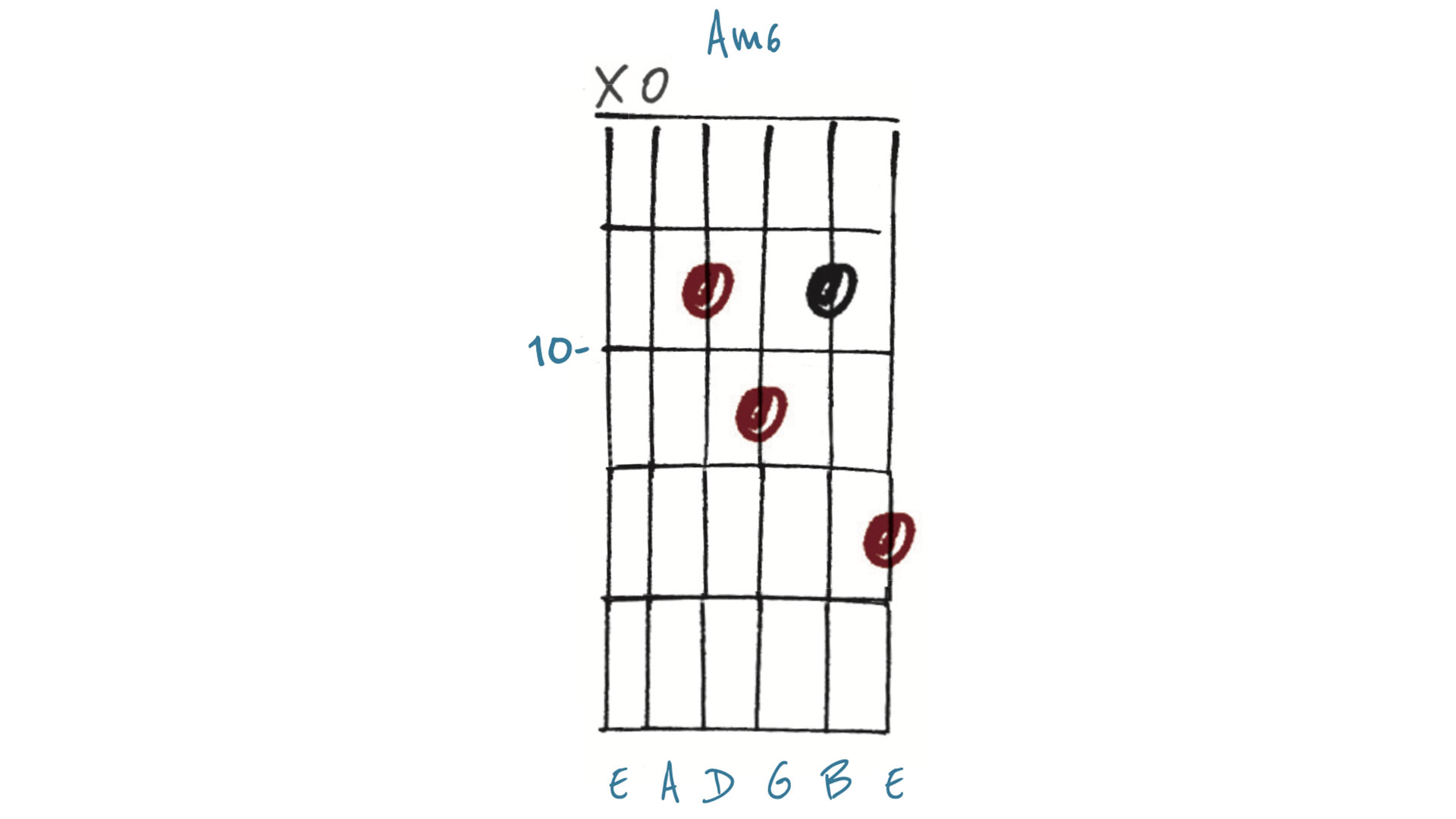
This final Am6 takes us up to the 12th fret, beyond which all the shapes repeat as much as space (and intonation settings!) allow. See if you can identify each note and relate it to where else we have played it in the other examples. We still get to keep all our favorite patterns and can add these, too.
Get The Pick Newsletter
All the latest guitar news, interviews, lessons, reviews, deals and more, direct to your inbox!
As well as a longtime contributor to Guitarist and Guitar Techniques, Richard is Tony Hadley’s longstanding guitarist, and has worked with everyone from Roger Daltrey to Ronan Keating.








![Joe Bonamassa [left] wears a deep blue suit and polka-dotted shirt and plays his green refin Strat; the late Irish blues legend Rory Gallagher [right] screams and inflicts some punishment on his heavily worn number one Stratocaster.](https://cdn.mos.cms.futurecdn.net/cw28h7UBcTVfTLs7p7eiLe.jpg)


